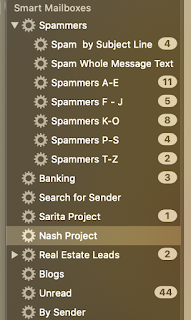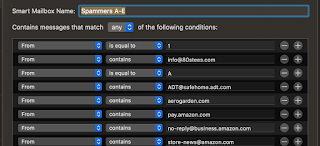 Once you decide to buy a new vehicle, deciding which model is a delicate balance of needs, wants, and abilities.
Once you decide to buy a new vehicle, deciding which model is a delicate balance of needs, wants, and abilities.
This post originally appeared on the Hermit Haus Redevelopment website on 2019-11-16.
This topic has been on my mind a lot. It turns out that none of our vehicles are really suited to the new business, which has some fairly specific needs. Unfortunately, so do I. And those needs don’t have a lot of overlap.
But rather than talk about the process of selecting a vehicle, let’s answer the question in the title of this post. Do you really need a new car? Maybe following my thought process can help you with a similar decision.
As I see it, there are three ways to answer that questions:
- Yes, I need a new car.
- Yes, I need a car, but a used one makes more sense.
- No, I don’t need a car at all.
You notice I’m not getting dragged into the semantic nonsense about “pre-owned.” If someone else has owned a car, you can make it a true Daily Double that they used it.
Now, let’s look at those options.
The No Car Option
If you live in big enough city, you may not need a car at all. That doesn’t mean you won’t have any transportation costs. You’ll still have to pay for mass transit and for each ride you take in a taxi, Uber, of Lyft. But those costs are often lower than the cost of owning, and you only pay for what you use. I’m not going to say you pay for what you need, because you may not really need all those trips to Papadeaux.
While somewhere around 80% of the US population lives in metropolitan areas, that leaves 20% of us who do not. For those of us without access to any form of public transportation, the decision boils down to new or used.
 For those of us who can’t do without a car, the decision boils down to new or used? That decision involves a huge cost/benefit analysis.
For those of us who can’t do without a car, the decision boils down to new or used? That decision involves a huge cost/benefit analysis.
New Versus Used
Most of us want a new car even when a used car will suffice. We don’t really need a new one. But there are a few people who really do need a new car. So, let’s figure out if you really need one or just want one.
Costs
But first, let me tell you why it’s important. Most of us finance the purchase of a new car. That means we pay the price of the car, the additional cost of interest, and the opportunity costs of not using that money elsewhere. For almost everyone, a new car is the second leading source of Bad Debt, right after credit card debt.
Bad Debt is like the flu. It’s very prevalent. Surviving it can make you somewhat stronger. But it sucks (money out of your pocket) while you’re fighting it.
For most of us, it doesn’t matter if you have a new car or a used one, but the costs of a new car are generally higher. For example, I bought a new XJ-L in 2013 just after the new models came out. It cost about $90,000. Today, it’s worth about $25,000. I still love that car, but was it worth $65,000 in depreciation over the past six years. That’s only the book value. I’m not going to add interest expenses on this car because I got really good financing where the interest rate was much less than the rate of inflation. (More about that later.)
But even so, for the equity I spent on the car, I could have bought two rent houses in Austin or three (maybe four) in Cameron. Those rentals would have paid for themselves and put money back into my pocket. That is the classic definition of an opportunity cost. Maybe a less expensive car or a used one would have sufficed.
A car may be Bad Debt, but for many of us, it’s a necessary one. It’s a debt that enables us to get out of the house for work, community, and food. I don’t personally know anyone who lives completely off the grid.
Interest Expense
Hearts, Homes, and Hands occasionally needs to move people, their belongings, and accommodations (like wheelchairs). To make sure we have enough room, Kathleen suggested a Yukon/Expedition class vehicle. So, I went shopping.
Sticker shock! These cars are a lot more expensive than you might think. But the slightly used ones were significantly lower priced than the new ones. Someone else had already realized at least some of the depreciation costs. But that didn’t mean the case was closed. Financing costs were so much higher on the used ones that the advertised monthly payment was higher than on a new one. In fact, the finance costs eliminated more than half of the difference in the total cost of the vehicle.
But the more depreciation someone else pays for, the less you do.
Maintenance
Maintenance costs can represent one of the true advantages of buying a new car. Some plans include all the maintenance for the first few years. There is also the perception, not always true, that new cars are more reliable than used ones. My dad used to refer to used cars as “buying someone else’s problems.”
The truth is today’s cars are usually very reliable.
Pat Goss once said on
MotorWeek, “The least-good cars today are still better than the best cars of twenty years ago.” He was talking about things like fit-and-finish and general reliability.
As a rule, I wouldn’t let maintenance costs factor into my decision for new or or lightly used. You should expect about the same maintenance cost regardless. Now if you buy a 20-year-old clunker, you’ll have to weight the maintenance costs against the monthly payments on a newer vehicle.
 First impressions go a long way to establishing our credibility. Data shows it also helps to be young, healthy, white, and male. So why do I find the guy who shows up so much in my Google search for “credibility” kinda creepy?
First impressions go a long way to establishing our credibility. Data shows it also helps to be young, healthy, white, and male. So why do I find the guy who shows up so much in my Google search for “credibility” kinda creepy?
Status/Credibility
We tend to think of status as a soft asset, one that makes us fell good but doesn’t pay the bills. An early mentor of mine said, “Status is when you look good and smell good, but you’re broke.” It took me a long time to overcome that mindset. I now prefer to think in terms of credibility.
For many of us—investors, real estate agents, and other professionals—credibility is our life blood. Without it, we don’t make deals. And we don’t make money without deals. It’s a sad fact that many people form their opinions about us based on what we drive. That’s why I think of that Jaguar as “instant credibility.” When I lived in Austin, I could see people’s opinions change for the better when they saw that car. In fact, Phil Grove tells the story of one of his friends being advised to buy a Bentley to attract more investment into his growing business.
But that credibility depends on where you live. In a small town like Cameron, my Jag often buys the “rich snob” reputation instead of the “successful businessman” one. That would hold true whether or not I bought a new or a used Jag. Trades often want to charge me more when I show up in the Jag than when I show up in my 2012 pickup. I’ve overheard them say, “He can afford it.”
What to Drive
I have no idea what, if anything, you should drive. That depends on where you live and what your goals are, and I’m having a hard enough time making up my own mind. I’ll let you know when I figure out what I’m going to do.






































